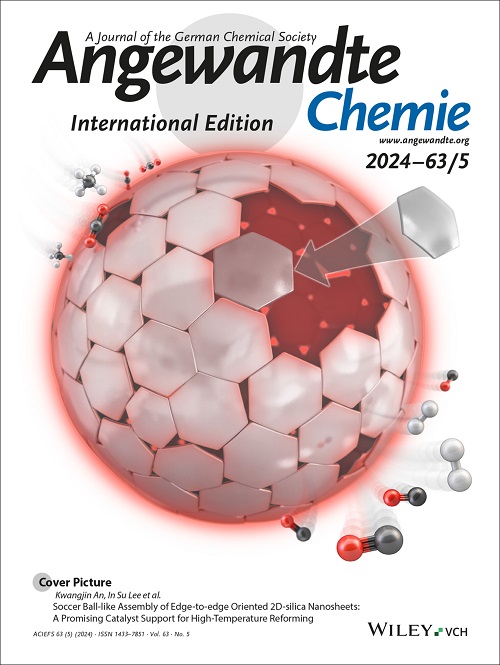Mitochondria‐Targeting Abasic Site‐Reactive Probe (mTAP) Enables the Manipulation of Mitochondrial DNA Levels
IF 16.1
1区 化学
Q1 CHEMISTRY, MULTIDISCIPLINARY
引用次数: 0
Abstract
Mitochondrial DNA (mtDNA) encodes essential genes for mitochondrial and cellular functions and acts as a cell signaling molecule in innate immune and inflammatory responses. Defects in mtDNA are implicated in a range of mitochondrial disorders and human diseases. Currently, no chemical strategy exists to prevent mtDNA loss under genotoxic stress. To address this, we developed a mitochondria‐targeting probe (mTAP) that selectively reacts with key mtDNA repair intermediates – abasic (AP) sites. We confirmed that mTAP forms oxime conjugates exclusively with mitochondrial AP sites without conjugation with nuclear AP sites. Upon mTAP conjugation, DNA substrates containing AP sites become resistant to cleavage by AP endonuclease (APE1) and mitochondrial extracts. This conjugation significantly reduced APE1's DNA‐binding affinity without affecting the DNA‐binding activity of a mtDNA‐packaging factor, mitochondrial transcription factor A (TFAM). Importantly, cellular experiments demonstrated that mTAP treatment alleviated the decrease in mtDNA and transcription product levels induced by mitochondrial AP site damage. Functional assays also demonstrate that mTAP treatment did not compromise mtDNA replication activity or increase the overall mtDNA damage level. These findings highlight the potential of mTAP as a valuable chemical tool to modulate mtDNA levels under genotoxic stress.线粒体靶向基本位点反应探针(mTAP)能够操纵线粒体DNA水平
线粒体DNA (mtDNA)编码线粒体和细胞功能的必需基因,并在先天免疫和炎症反应中作为细胞信号分子。线粒体dna的缺陷与一系列线粒体疾病和人类疾病有关。目前,还没有化学策略可以防止mtDNA在基因毒性胁迫下丢失。为了解决这个问题,我们开发了一种线粒体靶向探针(mTAP),它可以选择性地与关键的mtDNA修复中间体-基本位点(AP)发生反应。我们证实mTAP只与线粒体AP位点形成肟偶联物,而不与核AP位点偶联。在mTAP结合后,含有AP位点的DNA底物可以抵抗AP内切酶(APE1)和线粒体提取物的切割。这种结合显著降低了APE1的DNA结合亲和力,而不影响mtDNA包装因子,线粒体转录因子a (TFAM)的DNA结合活性。重要的是,细胞实验表明,mTAP处理减轻了线粒体AP位点损伤引起的mtDNA和转录产物水平的下降。功能分析还表明,mTAP治疗不会损害mtDNA复制活性或增加总体mtDNA损伤水平。这些发现突出了mTAP作为一种有价值的化学工具在基因毒性胁迫下调节mtDNA水平的潜力。
本文章由计算机程序翻译,如有差异,请以英文原文为准。
求助全文
约1分钟内获得全文
求助全文
来源期刊
CiteScore
26.60
自引率
6.60%
发文量
3549
审稿时长
1.5 months
期刊介绍:
Angewandte Chemie, a journal of the German Chemical Society (GDCh), maintains a leading position among scholarly journals in general chemistry with an impressive Impact Factor of 16.6 (2022 Journal Citation Reports, Clarivate, 2023). Published weekly in a reader-friendly format, it features new articles almost every day. Established in 1887, Angewandte Chemie is a prominent chemistry journal, offering a dynamic blend of Review-type articles, Highlights, Communications, and Research Articles on a weekly basis, making it unique in the field.

 求助内容:
求助内容: 应助结果提醒方式:
应助结果提醒方式:


